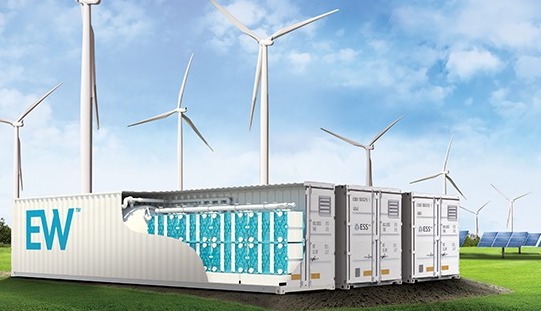
A 20MWh vanadium redox flow battery (VRFB) project is being developed for construction at the site of an existing natural gas peaker plant in California, by South Korea’s H2 Inc.
H2 said earlier this week that development work has kicked off on what looks likely to be the US’ biggest VRFB project so far, at 5MW output and 20MWh capacity, larger than the 2MW / 8MWh system deployed in 2017 by Japan’s Sumitomo Electric Industries for California utility San Diego Gas & Electric (SDG&E) and another of similar size in Washington State.
Enjoy 12 months of exclusive analysis
- Regular insight and analysis of the industry’s biggest developments
- In-depth interviews with the industry’s leading figures
- Annual digital subscription to the PV Tech Power journal
- Discounts on Solar Media’s portfolio of events, in-person and virtual
Members of the H2-led consortium developing the project include a Korean state-run generation company and one of the country’s national research institutes, with the Korean government financially backing it, the flow battery company claimed.
Expected to be fully operational and participating in market opportunities on the California power grid by the end of 2023 after a pilot phase, battery modules will be pre-assembled by H2 using its EnerFLOW VRFB brand technology.
Everything from software to electro-chemistry and mechanical and electrical engineering will be done in-house by the company, which hopes to expand nationwide into the US market once the success of the project has been proven.
It’s interesting to see that despite the long-duration capabilities of VRFBs and their ability to scale to host high energy capacity, the system is planned to be four-hours duration, which at present is the most common configuration for the more common lithium-ion batteries that are being deployed all over California. A four-hour 100MW lithium-ion battery project at the site of Alamitos gas plant in the state went online the first day of 2021, and was the first time batteries went up against natural gas to supply peaking capacity for a utility company in the US and won.
However, H2 said the Korean government will be looking closely at the new project to see if flow batteries can be an answer to renewables integration challenges back home, not least of all because confidence in South Korea’s BESS market was badly dented three years ago by a spate of fires at hastily-deployed industrial battery projects.
VRFBs store energy in liquid electrolyte tanks and do not have cells that can go into thermal runaway and potentially cause fires, as lithium-ion batteries do — albeit rarely.
“California is a perfect testbed for large-scale VRFB to replace traditional gas peakers taking great majority of power generation in the state. Since California is a frontrunner in carbon neutrality movements to overcome global climate change, 20MWh VRFB project is going to be a significant milestone for many states in the US and other following regions with similar targets,” H2 Inc founder and CEO Dr Shin Han said.
“This monumental project will show how VRFB is able to substitute for fossil-fuelled power plants and optimise power grids crowded with increasing renewable energy.”
It’s unlikely however to remain California’s biggest flow battery for long — in November Energy-Storage.news reported that energy supplier Central Coast Community Energy (CCCE) had announced four new grid-scale battery projects including three flow battery systems ranging from 6MW / 18MWh to 16MW / 128MWh, totalling 226MWh of eight-hour duration energy storage paired with solar PV plants. Those are expected to be operational in 2026.
In October, H2 Inc raised US$15 million through a Series B funding round, bringing the company’s total funds raised since its founding 11 years ago to US$38 million. H2’s 1.1MWh flow battery system in Ulsan, South Korea, is the country’s only non-lithium battery installation to be receiving renewable energy credits (RECs).
ESS Inc iron flow batteries to be used in California microgrid
Also in the last few days, iron electrolyte flow battery provider ESS Inc has announced its involvement in a microgrid project for California utility San Diego Gas & Electric (SDG&E).
ESS Inc told Energy-Storage.news that a system with a nominal rating of 450kW and peak power output of 540kW and an energy capacity of 3MWh is being deployed for the California town of Cameron Corners.
The six-hour duration energy storage system (ESS) will be combined with onsite solar PV to create the zero-emissions microgrid, supporting critical community resources such as a health centre and fire station with back up power.
When not being used to provide local resiliency, the system will be able to play into California wholesale energy market opportunities and earn revenues for supporting the grid with balancing services.
It’s the latest California microgrid project to use flow batteries to enable several hours of backup power: Anglo-American vanadium flow battery provider Invinity has bagged a handful of similar projects, with support from the California Energy Commission.
ESS Inc CEO Eric Dresselhuys was among industry leaders participating in Energy-Storage.news‘ year in review 2021 interview blog series. Read his thoughts on 2021 and what the future holds for energy storage here.






